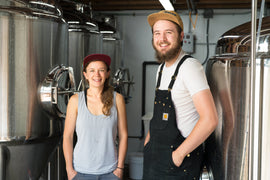Emilia-Romagna
Tuscany may draw more tourists, but Emilia-Romagna, its neighbor to the north, mounts a mosaic of Italian cultural splendor everywhere you look. Stretching across north-central Italy, from the southeastern tip of Piedmont to the Adriatic Sea, the nine provinces that make up the region flaunt apogees in everything from cars (Ducati, Lamborghini, Ferrari, Maserati, and Pagani all rev their engines here); to cinema (Antonioni, Bertolucci, Pasolini, and Fellini are native sons; the latter’s immortal Amacord was filmed in his childhood home of Rimini on the Adriatic); to music (composers Verdi and Toscanini hail from the small town of Busseto and the City of Parma, respecitively); to, of course, mosaics (the stunning early Christian art of one time Roman Empire capital Ravenna).
It’s an amazing place to venerate the heights of human craft and creativity - and then go eat, because Emilia Romagana is also the food capital of Italy. Parma, the region’s second largest city is the birthplace of both Parmesan Reggiano and Prosciutto di Parma; Bologna, the actual capital and largest city - which also houses the world’s oldest university - gifts the world ragù (bolognese sauce) and tagliatelle. Modena, hometown of the tenor Pavoratti, is also responsible for balsamic vinaigrette in its most elevated form. Nor is the region simply coasting on its culinary past – Osteria Francescana in Modena, topped the ‘World 50 Best Restaurants’ list in 2016 and 2018 - and there are countless exceptional places to eat that are less famous and easier to get into.
The wine is great too of course, though sometimes it gets eclipsed by all the blinding nearby excellence. Viticulture in Emilia-Romagna is quite regionally specific and has developed roughly along the bifurcation traced by its hyphen. Emilia, the western part, which consists of the provinces of Piacenza, Parma, Regio Emilia, Modena, and Ferrara, was settled by Barbarian populations, whose rich diet of butter and pork called for the palate cleansing properties of sparkling wine. Consequently, this is where Lambrusco, the frizzante red that is the region’s best known (and one of Italy’s oldest) wines, comes from. Romagna, made up of Ravenna, Forlì-Cesena, and Rimini in the east, was ruled by Romans and olive oil whose herb-y, oleaginous effect requires wine with more structure to balance the flavors in the mouth. Romagna is best known for the thick-skinned white grape Albana, whose roots in the region go back to antiquity (Albus = white in Latin) and is rarely seen outside it; and Sangiovese di Romagna, the local variation on the iconic red grape best known for Tuscan bottlings like Chianti and Brunello.
Our white this month comes from Emila-Romanga’s ninth province, Bologna, which connects the two halves. The hills outside the capital city are home to the grape Pignoletto, which is frequently made into delicious still and sparkling wine. This unique bottling is what biodynamic winemaker Frederico Corsi refers to as his vino perpetuo – an ever evolving solera - style farrago of Pignoletto, Alizona, Albana, and Malvasia, from different vessels, with the most recently made wine added to 10 previous vintages in a tank and bottled every six weeks. (Frederico writes bottling dates on each batch.)
Our red selection is a Sangiovese di Romagna from Tre Monti; a pioneering minimal intervention family winery in the Oriolo sub-region of the Ravenna province. ‘Thea’ is their flagship cuvee, named after the matriarch of the family. Anthony Bourdain visited the vineyards on an Emilia-Romagna set episode of No Reservations and rhapsodized this particular wine, the homemade tagliatelle that accompanied it, and the gorgeous surroundings, thusly: “To be sitting in a table like this, eating freshly made pasta, drinking wine this good and looking at this; This is what every sensible person in the world wants.”
Salut,
Alan Hicks - Wine Buyer - Noe Valley
|
Region: Vino Bianca, Emilia Romagna |
About the Winery: Federico Orsi was born in Bologna, but grew up in Brazil. After returning to Italy in his late teens to study business, he began working as a consultant while planning to earn his MBA. Though poised for corporate life, the sale of a local Bolognese winery would forever change the course of his life. In 2005, the Azienda Agricola San Vito was put up for sale. Having heard the news, Federico, who'd developed a passion for wine in his early 20's, jokingly proposed buying it to his family. Much to his surprise, they were overwhelmingly supportive! With no knowledge of viticulture or winemaking, Federico hit the books and eventually came across the philosophy of biodynamic farming. This holistic approach deeply inspired him, and with the knowledge acquired through numerous meetings with biodynamic farmers, the estate was converted from its very first year under new ownership. Minimal intervention winemaking soon followed, and by 2009 the wines were all vinified with native yeasts, un-fined, unfiltered and only lightly sulfured at bottling. About the Winemaking: The estate, located 30 minutes from Bologna in the town of Monteveglio, consists of 9.5 hectares of land, with an additional 5.5 hectares rented. The Posca project is a non-vintage wine that is drawn from a big old concrete vat which contains a blend of Pignoletto, Alionza, Albana, and Malvasia from different vineyards of various ages and from every vintage back to 2010. The wines are made in different ways, in a variety of vessels. The majority of the blend is made up of wine from the most recent vintage and the vat is constantly being topped up with young wine to prevent oxidation. A Posca was the daily ration of wine accorded to Roman soldiers. Spontaneous fermentations in various vessels (botti, cement, qvevri, stainless steel) with variable amount of skin contact. Whenever a batch is bottled, wine from each vessel is added to the perpetual tank, creating an ever-evolving, multi-vintage blend. S02 use depends highly on the sanitary state of the grapes. Some years none will be added, others a couple grams per hectoliter will be added on the harvest, other times at bottling. Grapes are indigenous varietals Pignoletto, Alionza, Malvasia, and Albana. Tasting Notes: Floral touches from Malvasia, fresh, zesty notes from the young Pignoletto, and savory, nutty tones from the Pignoletto that has had more time to mature in the tank, along with citrus, apricot, pear, and salt. |
|
Winemaker: Frederico Orsi |
|
|
Price per bottle / Price per case $26 $280.80 |
|
|
Suggested Food Pairing: Seafood or wild mushroom risotto, umami rich dishes like: Parmesan roasted cauliflower, mapo tofu |
|
|
Region: Romagna DOC Sangiovese Riserva M.G.A. “Oriolo” |
About the Winery: This 30-hectare estate located in the hills of Imola overlooking the Romagna plain specializes in the three local varietals: Albana, Trebbiano, and Sangiovese. The viticulture here is currently sustainable, andthe estate is incorporating biodynamic principles more and more. Soil types are mainly sandy clay with small pebbles, which seem to be ideal for producing the crisp mineral white wines that this estate is known for. Cool nights and hot days are ideal for ripening both the Albana and Trebbiano vineyards. The winemaking operations are watched over painstakingly by the experienced and talented Vittorio Navacchia, and animated by a philosophy of minimal intervention. Every step is carried out with full respect not only for the integrity of the fruit, but above all for the unique character of each growing year, so that Vittorio can ensure that the final wines fully expresses all of the conditions that gave it “birth”.
About Winemaking: Sandy soils of clay with abundant gravely texture and 50-year old vines. Harvested by hand in September, followed by 12-day maceration with malolactic fermentation and nine months in new medium Alllier barrels. Tasting Notes: Ruby red color, elegant and delicate nose with notes of fruit, red rose petals, black pepper, and sweet liquorice. Velvety and elegant on the palate, echoing the aromas of the nose with fine-grained tannins and leisurely development. |
|
Winemaker: Vittorio Navacchia. |
|
|
Price per bottle / Price per case $37 $248.40 |
|
|
Suggested Food Pairing: Polenta with game or mushrooms, grills and stews, roast lamb. Tagliatelle ragù (see recipe). |
|
Tagliatelle (al Ragù) Bolognese & Vegetarian
Simple, but why mess with perfection? We couldn’t locate exact recipe for dish from No Reservations episode, but that required Tagliatelle made from scratch. Here are two easier versions, traditional ragu, and vegetarian:
Ingredients:
1 lb. fresh egg tagliatelle; 3⁄4 lb. ground beef; 1⁄3 lb. pancetta; 1 1/4 cups puréed tomato passata;
3⁄4 cup beef broth; 2 carrots; 2 celery stalks; 1⁄2 small onion; 1⁄2 cup red (or dry white) wine;
1⁄2 cup milk; extra-virgin olive oil; salt – pepper
Instructions:
- Chop the pancetta. Trim the celery, carrots, and onion, and mince them all into fine pieces.
- Heat a pan with a drizzle of oil, sauté the pancetta, add the vegetables and gently sweat until soft.
- Add the meat and sauté for 5 minutes.
- Add ½ cup wine and allow to completely evaporate.
- Add the tomato passata and stir for a few minutes. Add ½ cup milk and cover with the broth
- Cook the meat sauce for 2-3 hours, adding more broth every now and then while adjusting the seasoning.
- Cook the tagliatelle in salted boiling water for 3-4 minutes, drain and serve with generous amounts of sauce.
Vegetarian Version
Ingredients
1 oz. of egg tagliatelle; 2 zucchini; 1 red bell pepper; 1 carrot; 1 onion; tomato passata; 1 garlic clove; basil; parsley; olive oil; pepper; salt
Instructions
- Clean and julienne the zucchini, carrot, and pepper. Finely chop 1 medium onion and 1 garlic clove together.
- Bring a large pot of water to a boil. Add salt.
- Sauté the chopped onion and garlic in a saucepan with 3 Tbsp. oil. Add the julienned vegetables. Season with a handful of basil. Add 1 cup tomato passata and simmer for around 10 minutes. Season with salt and pepper to taste.
- Cook the pasta until al dente, strain and toss it in the pot with the vegetables. Finish with plenty of chopped parsley and 2 Tbsp. olive oil.





